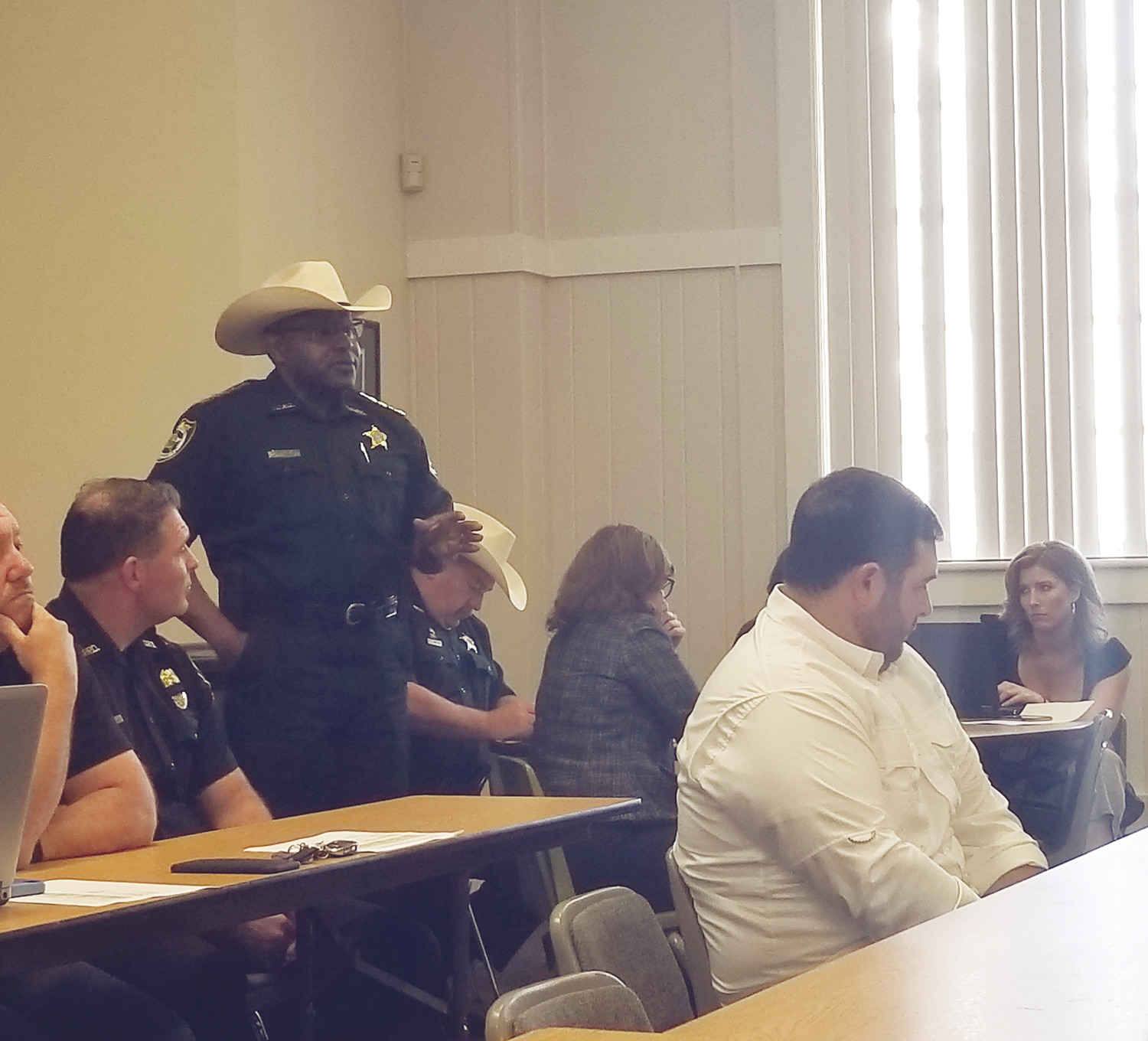Boosting school safety
Board to contract for 44 resource officers
This item is available in full to subscribers.
Attention subscribers
To continue reading, you will need to either log in to your subscriber account, or purchase a new subscription.
If you are a current print subscriber, you can set up a free website account and connect your subscription to it by clicking here.
If you are a digital subscriber with an active, online-only subscription then you already have an account here. Just reset your password if you've not yet logged in to your account on this new site.
Otherwise, click here to view your options for subscribing.
Please log in to continueDon't have an ID?Print subscribersIf you're a print subscriber, but do not yet have an online account, click here to create one. Non-subscribersClick here to see your options for subscribing. Single day passYou also have the option of purchasing 24 hours of access, for $1.00. Click here to purchase a single day pass. |
Boosting school safety
Board to contract for 44 resource officers
GREEN COVE SPRINGS – The Clay County School Board doubled down on efforts to place a school resource officer in every school during a special meeting here on April 23.
After a workshop that lasted over two hours with the Board of County Commissioners and Sheriff Darryl Daniels on April 18, the school board left a bit defeated, still unsure of how to fund 44 SROs. As a result, they held a special meeting the following Monday to further discuss funding options.
“We know what we want to do but now we have to figure out how we’re going to do it,” said Carol Studdard, School Board chairman.
Superintendent Addison Davis left the April 18 workshop with a mission to come up with a few viable options to meet a mandate made by the Florida Legislature earlier this year. This mandate declares that every school in Florida must be protected by an SRO, a staff marshal or some combination of the two. Not only does the school board want to put an SRO in every school, but their hand has been forced in doing so. During the special meeting, Davis presented the school board with four options.
Option one sees an SRO in every school with a deficit in funding of $1,299,000. Option two puts an SRO in all secondary schools – all Clay County high schools already have an SRO – and Guardian Program participant in each elementary school. Option two would leave an additional $481,000 leftover. Option three places an SRO in all secondary schools and armed security guards from armed vendors in all elementary schools. This option would create a deficit of $166,000. Finally, option four involves an SRO in all secondary schools and the hiring of off-duty law enforcement from surrounding areas to cover elementary schools. This option leaves a $459,800 deficit in the school board’s budget.
These calculations include $1,641,000 from the state to fund Safe Schools, the new program requiring an SRO in every school. The option to utilize the Guardian Program would receive an additional $370,000 in state funding.
Quite quickly, the school board eliminated options two and three citing a lack of interest in hiring outside security, as well as eliminated the Guardian Program as options.
“I have not heard from a single teacher that wishes to be a Guardian,” school board member Betsy Condon said. “Not to mention, the training is not something everyone will complete.
“In Polk County, 10 staff started the training and only three people finished it,” Condon said.
With the help of Daniels, Davis explained the financials behind the remaining two options. Option one requires 44 officers at a cost of $55,000 per officer, six relief officers at a cost of $55,000 each, one detective for $55,000, six sergeants at $75,000 apiece and one trainer who would cost $55,000. The total cost of option one is $3,310,000.
Option four requires eight officers, one relief officer and one sergeant with the same costs per position. It would also require 33 off-duty law enforcement officers from surrounding agencies at a rough estimate of $57,600 per officer at a total cost of $1,900,800.
Davis recommended Option four but not for a lack of also wanting Option one.
“I don’t know if this is the most sound option. I do think there are other counties that will follow this but I wanted to present you with another viable option that would see law enforcement officers at each of our schools every single day,” Davis said. “Because of finances, this is my most realistic recommendation.”
Daniels, though, was not a fan of this option, although he understands that his agency is to follow whatever recommendation is made. For Daniels, Option four could result in a lack of consistency in law enforcement coverage as a different officer would be at a different school each day. Daniels also said moving officers around prevents what he calls the bonding between students at a school and their SRO.
“I kind of have a problem with [outside agencies] coming in who have no vested interest in the success of Clay County or the safety and security of our kids and teachers so I personally am against it,” Daniels said.
After some discussion, the school board agreed with what Daniels said concerning Option four and opted to throw that one out, leaving Option one as the only choice left.
It was at this point in the discussion that a new take on Option one arose. Since the state mandate, the school board has wanted a resource officer in every school but the funding simply wasn’t there. Condon suggested that the board contract 44 SROs and nothing more. Daniels then said the 44 SROs would also need supervisors, relief officers, a detective and a trainer. Condon explained to Daniels that it was not the school board’s place to define how the CCSO carries out it work and left the choice of having supervisors, relief officers, a detective and a trainer up to the sheriff.
“We’re not eliminating those positions,” Condon said. “That’s between the sheriff and his funding sources, which he gets his direction from the BCC. As a statutory requirement, we want to put 44 resource officers in our 44 schools and that is what we have to fund.”
Essentially, Condon, and the board who – for the most part – agreed with her, told Davis and Daniels that the school board will pay for 44 SROs for its 44 schools because of the state mandate.
The school board reached a consensus to have School Board Attorney David D’Agata draft a contract for the 44 officers from the CCSO in collaboration with the BCC. They also gave Davis direction to work collectively in determining the proper wording for additional millage, which the board plans to have on one of the upcoming fall ballots.
This new millage, which will serve as a direct funding stream for maintaining SROs in every Clay County school, is a millage the board believes the community will get behind and pass in the fall.
“I feel like our communities will get behind us,” Condon said. “I feel like our parents want safety in our schools and they will support us.”











